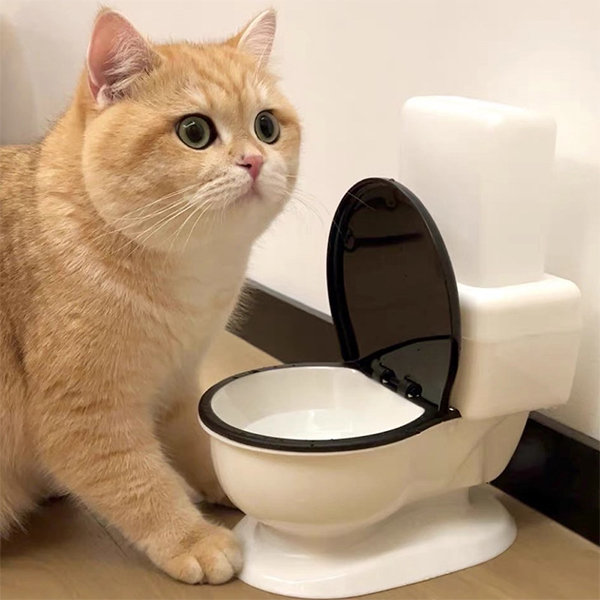Avoid Flush Cat Poop Down Your Toilet - Safeguard Your Plumbing Infrastructure
Avoid Flush Cat Poop Down Your Toilet - Safeguard Your Plumbing Infrastructure
Blog Article
Almost everyone seems to have their private concepts in relation to Don’t flush cat feces down the toilet.

Intro
As cat proprietors, it's vital to be mindful of exactly how we take care of our feline buddies' waste. While it might appear practical to flush pet cat poop down the commode, this practice can have damaging repercussions for both the environment and human wellness.
Alternatives to Flushing
Fortunately, there are much safer and a lot more accountable means to throw away cat poop. Think about the following choices:
1. Scoop and Dispose in Trash
The most usual technique of getting rid of pet cat poop is to scoop it right into a biodegradable bag and toss it in the garbage. Make certain to make use of a dedicated clutter inside story and dispose of the waste without delay.
2. Use Biodegradable Litter
Opt for eco-friendly feline litter made from products such as corn or wheat. These litters are eco-friendly and can be safely gotten rid of in the garbage.
3. Bury in the Yard
If you have a lawn, consider hiding cat waste in an assigned area far from veggie yards and water sources. Make sure to dig deep adequate to stop contamination of groundwater.
4. Mount a Pet Waste Disposal System
Invest in an animal garbage disposal system specifically created for pet cat waste. These systems use enzymes to break down the waste, minimizing smell and ecological influence.
Health Risks
In addition to ecological problems, purging pet cat waste can additionally posture health and wellness dangers to humans. Feline feces may include Toxoplasma gondii, a parasite that can trigger toxoplasmosis-- a possibly extreme ailment, specifically for pregnant females and individuals with damaged immune systems.
Ecological Impact
Flushing pet cat poop presents dangerous pathogens and bloodsuckers into the supply of water, posing a substantial risk to water ecosystems. These contaminants can negatively influence marine life and compromise water high quality.
Final thought
Responsible pet dog possession prolongs past giving food and shelter-- it also includes correct waste monitoring. By avoiding purging feline poop down the toilet and going with alternate disposal approaches, we can decrease our environmental impact and protect human health and wellness.
Why Can’t I Flush Cat Poop?
It Spreads a Parasite
Cats are frequently infected with a parasite called toxoplasma gondii. The parasite causes an infection called toxoplasmosis. It is usually harmless to cats. The parasite only uses cat poop as a host for its eggs. Otherwise, the cat’s immune system usually keeps the infection at low enough levels to maintain its own health. But it does not stop the develop of eggs. These eggs are tiny and surprisingly tough. They may survive for a year before they begin to grow. But that’s the problem.
Our wastewater system is not designed to deal with toxoplasmosis eggs. Instead, most eggs will flush from your toilet into sewers and wastewater management plants. After the sewage is treated for many other harmful things in it, it is typically released into local rivers, lakes, or oceans. Here, the toxoplasmosis eggs can find new hosts, including starfish, crabs, otters, and many other wildlife. For many, this is a significant risk to their health. Toxoplasmosis can also end up infecting water sources that are important for agriculture, which means our deer, pigs, and sheep can get infected too.
Is There Risk to Humans?
There can be a risk to human life from flushing cat poop down the toilet. If you do so, the parasites from your cat’s poop can end up in shellfish, game animals, or livestock. If this meat is then served raw or undercooked, the people who eat it can get sick.
In fact, according to the CDC, 40 million people in the United States are infected with toxoplasma gondii. They get it from exposure to infected seafood, or from some kind of cat poop contamination, like drinking from a stream that is contaminated or touching anything that has come into contact with cat poop. That includes just cleaning a cat litter box.
Most people who get infected with these parasites will not develop any symptoms. However, for pregnant women or for those with compromised immune systems, the parasite can cause severe health problems.
How to Handle Cat Poop
The best way to handle cat poop is actually to clean the box more often. The eggs that the parasite sheds will not become active until one to five days after the cat poops. That means that if you clean daily, you’re much less likely to come into direct contact with infectious eggs.
That said, always dispose of cat poop in the garbage and not down the toilet. Wash your hands before and after you clean the litter box, and bring the bag of poop right outside to your garbage bins.
https://trenchlesssolutionsusa.com/why-cant-i-flush-cat-poop/

Do you enjoy reading up on How to Dispose of Cat Poop and Litter Without Plastic Bags? Make a short review down below. We would be delighted to see your views about this blog post. Hoping that you visit us again in the near future. Make sure you take a moment to share this article if you enjoyed reading it. Thanks for your time. Don't hesitate to check up our site back soon.
Visit Site Report this page